The benefits of being able to play melodies, lick, riffs starting on any finger on any string.
The benefits of being able to play melodies, lick, riffs starting on any finger on any string. We've heard the benefit of “Every Key”, and if you are like me that is super challenging. I've for years thought this is what we had to do on guitar and hence ukulele. Then I heard that the world-famous jazz guitarist and teacher Dennis Sandole, his most famous student, was John Coltrane, among many, many others, had all his non guitar students play whatever they were assigned in their lessons to play in every key - yes, ALL 15 keys.
Every Keyhas been widely discussed, and if you're anything like me, you'll find it extremely challenging. For years, I believed that playing in every key was a necessary requirement for mastering the guitar and even the ukulele.
Every Finger, Every String. His non-guitar students had to play in ALL 15 Major & Minor Keys .
Every Finger, Every Stringconcept — just as the students of Dennis Sandole and the teachers he directly influenced had to do. Myself included as I studied with Chuck Anderson for many, many years and was required to do this.
The number one place to start that is the secret to this is — Learning the Names of the Notes of the Ukulele Fingerboard
. Without this you will NOT be able to even attempt this. And, the lessons and books, right here on LearningUkulele.com that show the solutions for scales and arpeggios using Every Finger, Every String
.
Every Finger, Every Stringon ukulele IS in The Six Secrets of Ukulele Fingering book.
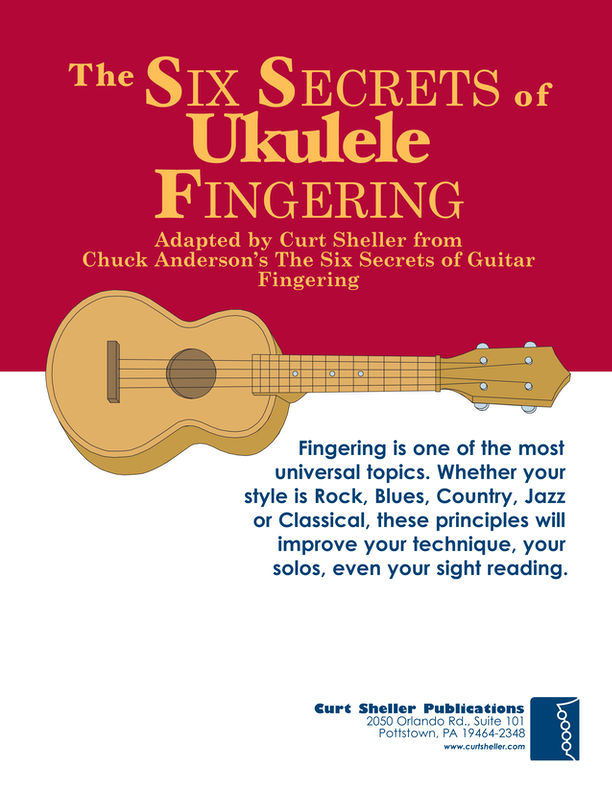


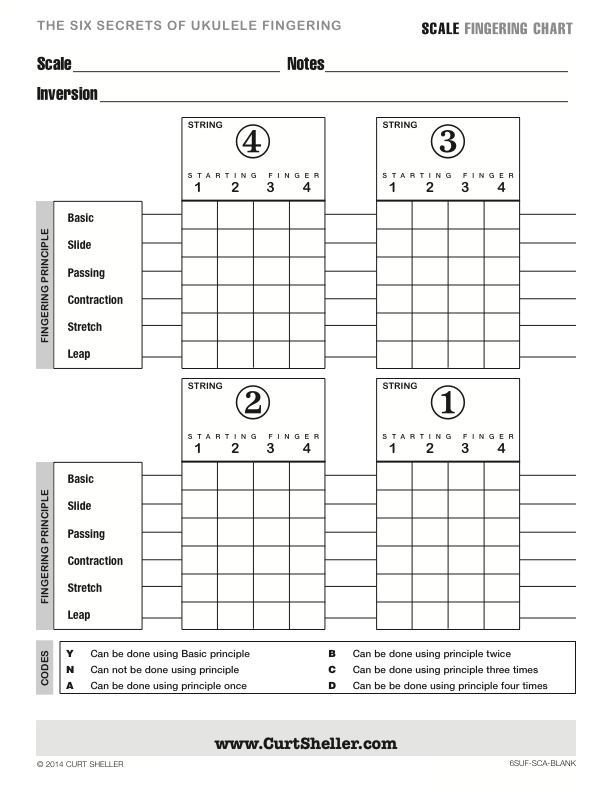
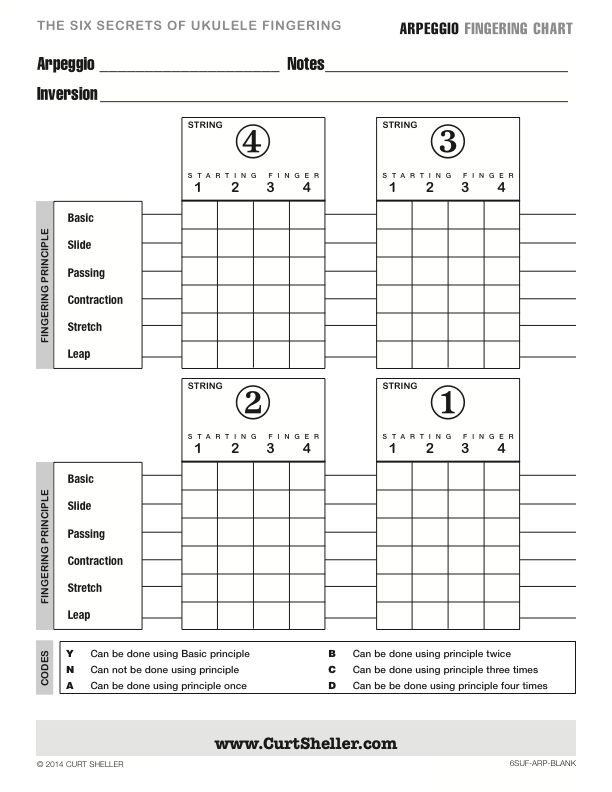
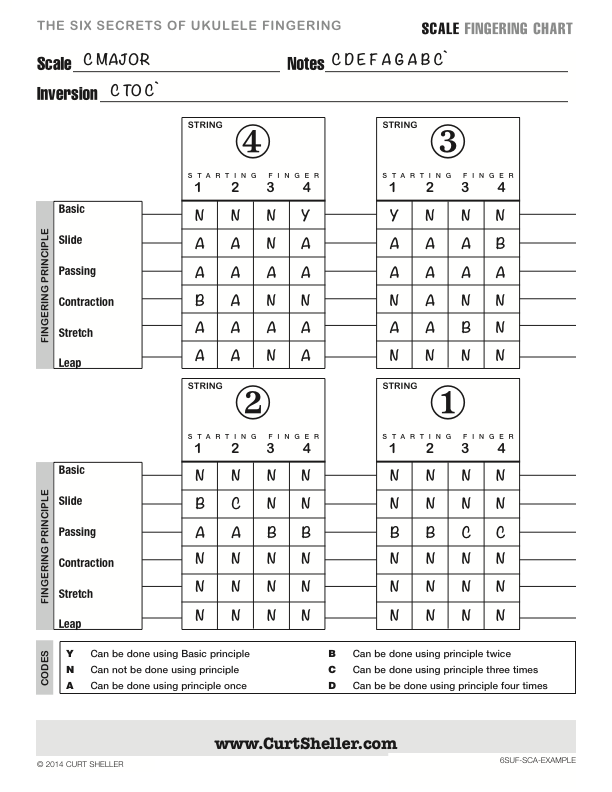


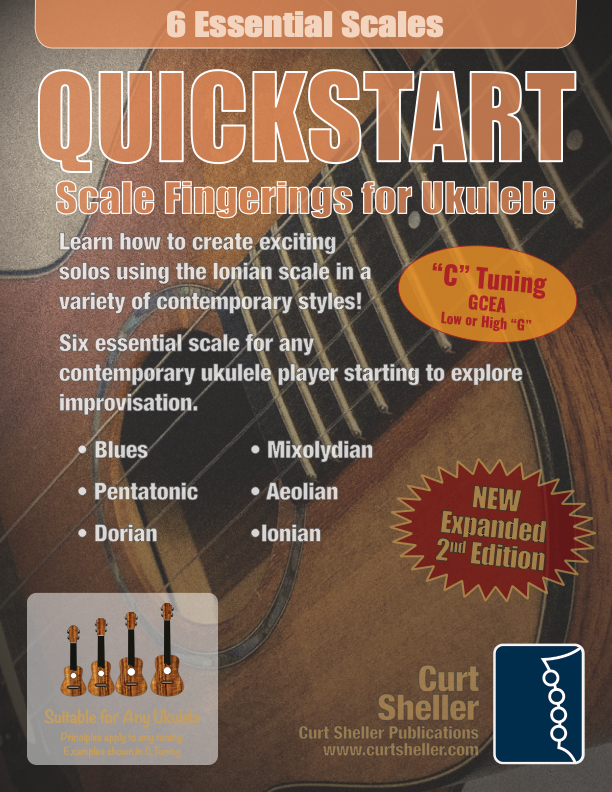
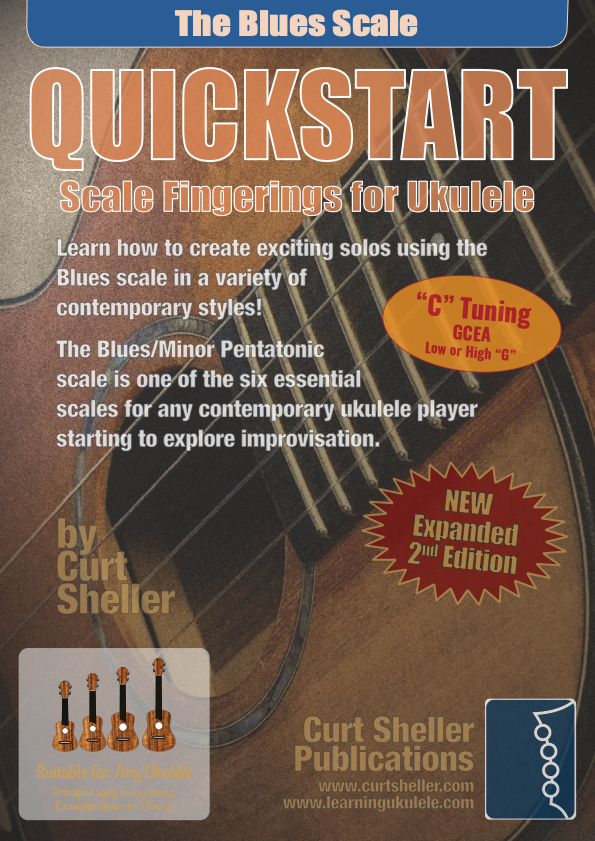
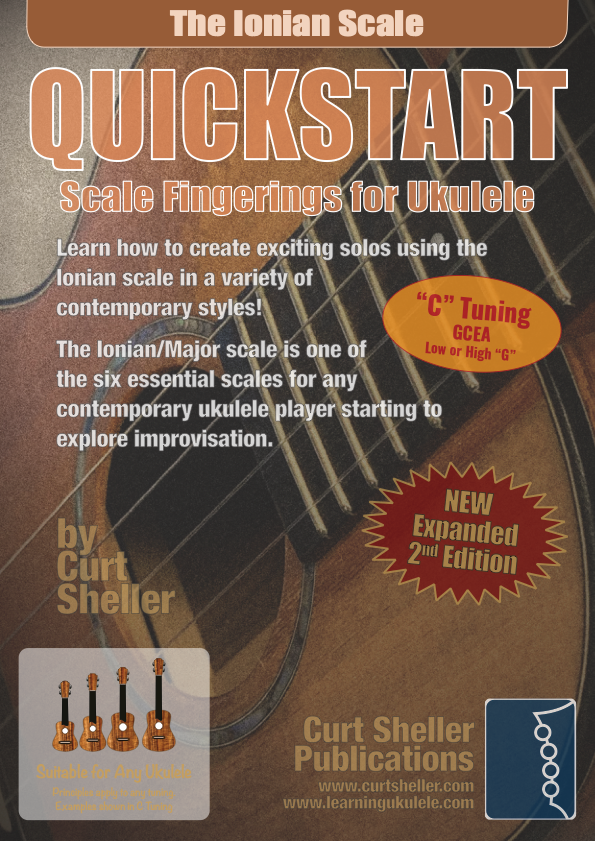
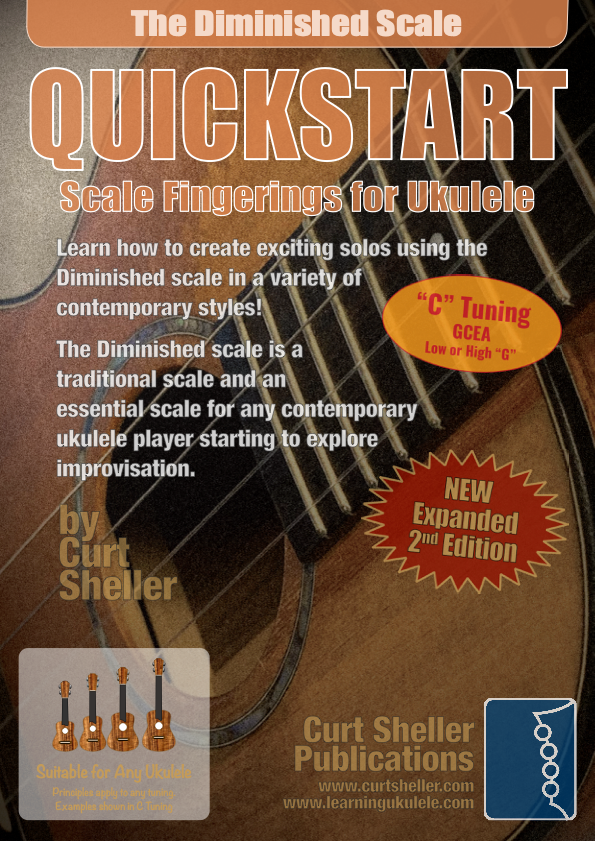

Every Finger, Every String. There is one solution for starting on each finger on every string. And, a lot more information on in the books including transposition to ALL keys.
- QuickStart Scale Fingerings for Ukulele, Volume I, C Tuning • Six essential scales for Guitar. Blues, Pentatonic, Dorian, Mixolydian, Aeolian and Ionian scales
- QuickStart Scale Fingerings for Lead Guitar - Volume I • Six essential scales for Guitar. Blues, Pentatonic, Dorian, Mixolydian, Aeolian and Ionian scales
- QuickStart Scale Fingerings for Bass Guitar - Blues Scale
- Slide Gymnastics for Ukulele • Beyond the basic four fret fingering position, it's on to the remaining fingering principles for navigating the fingerboard. The first in the series is the Slide.
- Pass Gymnastics for Ukulele • Beyond the basic four fret fingering position, it's on to the remaining fingering principles for navigating the fingerboard. The first in the series is the Pass.
 Here is more information on Dennis Sandole . I studied with Chuck Anderson who studied with Dennis for 8 years. Check was directly involved in bringing Dennis's books, Guitar Lore to publication and the subsequent, non-published Scale Lore books. There is a long line of musician directly effected by Dennis's teachings and expertise.
Here is more information on Dennis Sandole . I studied with Chuck Anderson who studied with Dennis for 8 years. Check was directly involved in bringing Dennis's books, Guitar Lore to publication and the subsequent, non-published Scale Lore books. There is a long line of musician directly effected by Dennis's teachings and expertise.
(from Wikipedia) Dennis Sandole was John Coltrane's mentor from 1946 until the early 1950s, introducing him to music theory beyond chords and scales and exposing him to the music of other cultures. Sandole taught advanced harmonic techniques that were applicable to any instrument, using exotic scales and creating his own. He taught privately until the end of his life. His students included saxophonists James Moody, Benny Golson, Michael Brecker, Rob Brown, and Bobby Zankel; Trumpeter Art Farmer; pianists Matthew Shipp and Sumi Tonooka; guitarists Jim Hall, Joe Diorio, Pat Martino, Joe Federico, Tony DeCaprio, Jon Herington, Bob DeVos, Larry Hoffman and Harry Leahey and other musicians such as Rufus Harley and Frank Gerrard.
Related Lessons, Videos, Lesson Series, Songs, Books & Reference Charts, Resources & Assets, Workshops are below.

Learning the names of the notes on the fingerboard is indeed a crucial skill for any musician, especially those who play stringed instruments like the guitar, violin, or cello. Having a solid understanding of the notes on the fingerboard can significantly enhance your playing, improvisation, and overall musicality. Here's a step-by-step approach you can follow to learn the fingerboard:

Traditionally, a tetrachord is a series of four tones filling in the interval of a perfect fourth. In modern usage a tetrachord is any four-note segment of a scale or tone row including the augmented fourth (+4). The term tetrachord derives from ancient Greek music theory, it literally means four strings.

Daily Practice Material for the Contemporary Ukulele Player is an organized collection of daily practice and reference material for the contemporary ukulele player. This material can be used to develop the vocabulary and knowledge necessary for single note playing.

QuickStart Scale Arpeggio Fingerings for Ukulele - Triads is a concise, well organized book ideal for any ukulele player beginning to explore the ukulele's full potential as a musical instrument. Arpeggio Fingerings for Ukulele - Triads keeps a sharp focus on essential arpeggios and their fingerings. All material is covered in every key.

Learn to create exciting solos in a variety of contemporary styles! Scales are used to improvise, create melodies and riffs. With broad knowledge of the essential scales that are used in contemporary music and a mastery of the ukulele's fingerboard and fingering principles, you're well on your way.

Learn the six fingering principles to navigating the ukulele fingerboard. Fingering is one of the most universal topics. Whether your style is Rock, Blues, Country, Jazz or Classical, these principles will improve your technique, your solos, even your sight reading. Think of fingering as a series of pathways. When you learn to connect these pathways, there are benefits not only to technique but also to creativity.

Finally, learn the names of the notes of the ukulele fingerboard in C tuning .

Learn the six fingering principles to navigating the ukulele fingerboard. Fingering is one of the most universal topics. Book: Six Secrets of the Ukulele Fingering

Harmonic Analysis is the understanding of the functional sequence of chords. It is the process used to analyze the harmonic structure of a progression, song or composition. Book: Harmonic Analysis for Scale Selection and Chord Substitution

Learn to read single note melodies in the first/open position is a lot easier than you might think. Book: Ukulele – Reading Music Series – Primer

An organized collection of daily practice and reference material for the contemporary ukulele player for developing the vocabulary and knowledge necessary for single note playing. Book: Daily Practice Material for the Contemporary Ukulele
Checkout the Books & Reference Charts for additional Handy, Dandy Reference Charts.

Ukulele Fingerboard Chart for C Tuning, Low or High G – G C E A

Ukulele Fingerboard Chart for G Tuning, Low or High A – D G B E

A handy reference chart of all 15 major and relative minor key signatures. US Letter 8.5 x 11 sized (ANSI-A), A4
Checkout the Books & Reference Charts for additional Handy, Dandy Reference Charts.



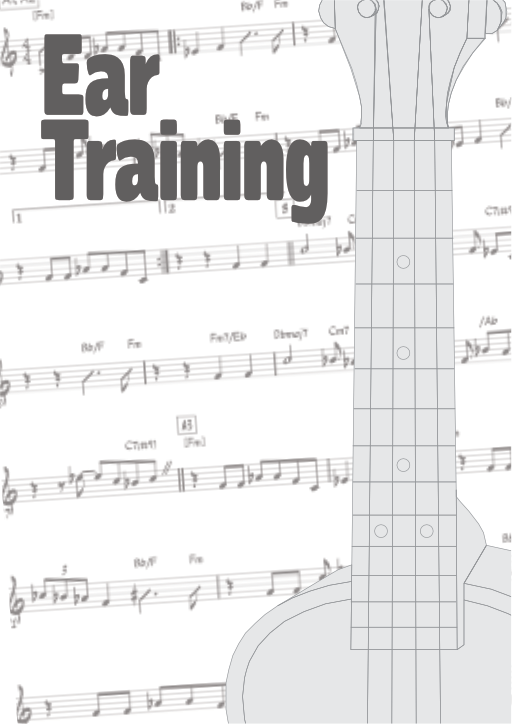


.jpg)